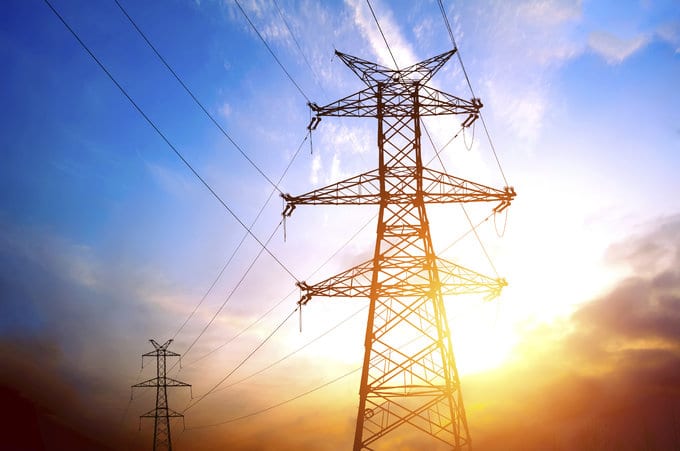“The stone age came to an end, not for lack of stones, and the oil age will end, but not for lack of oil” (Sheikh Yamani OPEC co-founder and former Saudi Arabian oil minister)

Electricity companies around the world will begin to go bankrupt by 2018, even while they generate profits. It sounds absurd doesn’t it? However, hear me out.
By now everyone has read the headlines. “Tesla Powerwall changes everything, electricity death spiral, energy storage revolution, the Kodak moment for electricity etc.” This was the hype of 2015.
In 2016, reality set in, many households realised a $A17,999 5kW SolarEdge system with a 7kWh Tesla Powerwall would take about 17 years to pay back. These were sobering figures considering most equipment warranties are only 10-12 years. However, in just 2 years this payback equation will be radically different. It will rock the very foundations of modern society, creating and destroying fortunes across the planet.
I contend that it is not widespread adoption of energy storage that will hurt electricity utilities, but instead it is Grid Parity incumbents should be concerned about.
Grid Parity will occur in 2-3 years. Grid Parity is a clear short signal to innovative traders that the 100-year-old electricity delivery model is about to rapidly unravel. Grid Parity will be the stimulus for traders to invest in all manner of short instruments that can capitalise on the convexity that will soon occur in this space.
Algorithmic momentum trading strategies will then cause many listed utilities that are running even conservative debt ratios (30% or less) to rapidly lose market capitalisation value, sending these previously conservative debt ratios to nosebleed levels.
Once a “whale” trader gets a sniff of this once in a lifetime opportunity the herd will all pile in crashing utility valuations around the planet in a matter of hours. The Plunge Protection Team((Group, and colloquially the Plunge Protection Team) was created by Executive Order 12631, signed on March 18, 1988 by United States President Ronald Reagan.)) will provide a series of short term relief measures, suspending trading in these entities before valuations continue their inevitable and terminal decline. Make no mistake, this event, which is perfectly foreseeable poses serious global systemic risk. Let’s join some dots and present the grid parity bear case.
In 2015 Bloomberg New Energy Finance released analysis showing long term costs in solar and energy storage had fallen by ~20-25%/annum. Shortly after, in November 2015 Dubai achieved an earth shattering utility scale solar price of less than 3 cents/kWh – cheaper than coal. Even at the residential scale solar is cheaper now than most retail tariffs around the western world. See chart below.

So, using the above BNEF example and taking a conservative 20%/annum decrease ((When the Tesla Powerwall Gen 1 was announced by Tesla in May 2015 costs were ~$350/kWh – just 6 months later Chevy announced its LG Chem powered Bolt had achieved pricing of ~$145/kWh)) in prices the Tesla Powerwall SolarEdge package with a current price of ~$A17,999 will become ~$A8800 by 2018- 2019.
For many households this represents a payback of 4-6 years.
This is radically different economics resulting in levelised cost of energy (LCOE) below 25.5c/kWh – grid parity or below in many countries and a short signal for innovative investors. Innovative traders and institutions should be purchasing Credit Default Swaps (CDS) ((Credit Default Swaps were developed by JPMorgan and Blythe McMasters in the late 1980s to insure the Exxon Valdez. Many traders, analysts and regulators contend it was CDS positons that exacerbated and dramatically accelerated the 2008 financial crisis following the collapse of Lehman. A CDS is effectively a bet that a company will default on its debt obligations and likely collapse.)) on incumbent utilities that look increasingly “subprime”.
The chart below illustrates technology uptake curves over the last 105 years. It is clear as digital technology began to proliferate the uptake trajectories steepened and many items reached saturation levels (>85% penetration) in less than ten years. So regardless of parity and profitability unless incumbent utilities radically transform their businesses in less than ten years they will be relegated to the dustbin of history.

At the industrial and commercial scale where the bulk of Gentailer revenue is derived, the economics of solar and energy storage are already in the 4-6-year payback range. Digital technology including Virtual Power Plants (VPP) as well as the multitude of other services outlined by Rocky Mountain Institute (RMI) in their seminal paper The Economics of Battery Energy Storage can accelerate solar and storage payback periods from the already compelling 4-6 years to as little as 3 years.
This should be truly terrifying to any incumbent Gentailer CEOs and their shareholders. Yet worldwide most of the individuals managing these soon to be stranded assets are either in extreme self-denial, consciously lying to preserve shareholder value until they have developed a new revenue stream, or just oblivious to the disruptive technology on their doorstep. Unfortunately, all of these approaches create systemic risk more serious than what we experienced in 2008.
I contend that listed utilities around the world are what Warren Buffett and Ben Graham have termed “Cigar butt businesses”. Like a cigar butt you find on the ground they have one more puff of “goodness” before they are truly a disgusting investment.
So the question I have is, if a little ole trader from Tasmania has worked this out, what large institutional funds around the world have also worked this out and how are they positioning themselves?
Furthermore, who is going to pay for this rapidly accelerating train wreck that is likely to wipe out pension funds and small and large investors alike? Are energy companies Too Big to Bail (TBTB)? Stay tuned for Part 2 of our analysis—Trading Fossils into Extinction.







